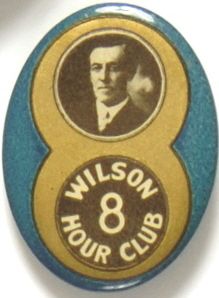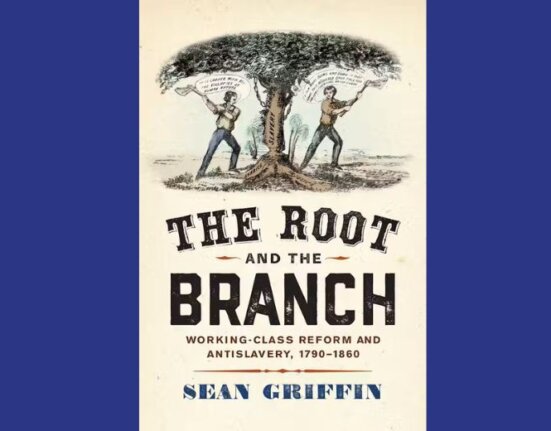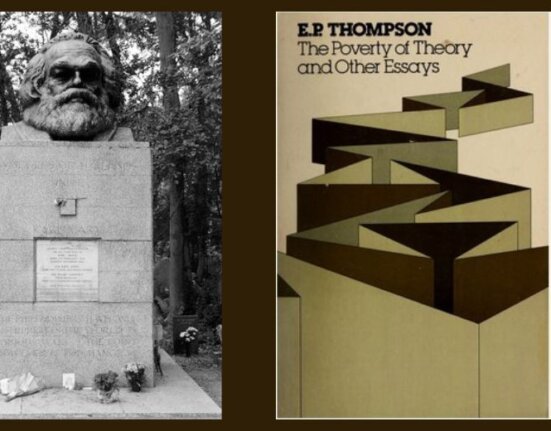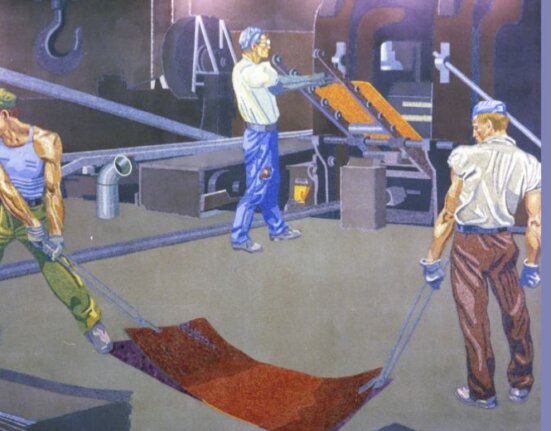How should Americans remember Woodrow Wilson? This is the central question triggered recently by Princeton University protesters who have brought attention to his racism. The protesters have rightly pointed out the loathsome words and actions of the turn-of-the-century pro-segregationist academic, former Princeton head, and two-term United States president. Numerous historians and journalists have weighed in on this divisive issue. Some, including the New York Times’s editorial board, have expressed sympathy with the students, recognizing the president’s role in promoting white supremacy. Others have put forward arguments that amount to, in Greg Grandin’s words, a weak tea defense of Wilson.

I would ask labor historians and activists to join this discussion by connecting race and class. In order to do that, we have to consider Wilson’s relationship with people in his orbit who sought to weaken labor. The so-called labor problem, expressed by the many late nineteenth and early twentieth century strikes, union-instigated boycotts, and organizing campaigns, was, in many ways, front and center in American society during the years Wilson occupied academic positions at Bryn Mawr, Wesleyan, Johns Hopkins, and Princeton, and during his two terms as president. Employers, many of whom enjoyed close relationships with Wilson, launched a forceful, and mostly successful, open-shop movement at the time he headed Princeton. In 1909, after thousands of employers’ busted unions, broke strikes, and blacklisted labor activists, Wilson went on record offering his wholehearted approval of the movement, calling himself “a fierce partisan of the Open Shop and everything that makes for individual liberty.” He promoted anti-unionism in numerous ways: by supporting the open-shop principle, by imposing anti-labor and anti-leftist polices during World War I, and by encouraging those involved in union-fighting efforts. This post addresses the last issue, emphasizing his part in advancing the careers of three prominent individuals active in this first-wave open-shop movement.
The first was Cincinnati’s Ernest F. Du Brul, the ambitious and well-read National Metal Trades Association (NMTA) organizer. After finishing his undergraduate degree at Notre Dame in 1892, the wealthy Catholic traveled to Baltimore where he studied political economy at Johns Hopkins. Although he never completed his masters’ degree, he did enroll in a course called “Politics” with Wilson in 1895. Following his short time in graduate school, Du Brul became a partner of the Miller, Du Brul, and Peters Manufacturing Company, a workplace that specialized in the construction of cigar and cigarette machinery started partially by his father, Napoleon Du Brul. At this time, Du Brul and numerous others from his class confronted a series of machinists’ strikes, including a very large one in 1901.
Rather than submit to the union activists’ demands, the city’s employers got organized, and in 1902, Du Brul became the NMTA’s vice president. Du Brul, demonstrating a strong willingness to fight as well as a deep knowledge of the dimensions of the labor problem, impressed his fellow union-fighters throughout the country. And there is reason to believe that the bookish Du Brul applied some of the lessons he learned from his classroom experiences at Johns Hopkins—lessons he might have picked up under Wilson’s tutelage—during his years as a nationally-prominent anti-union organizer. As the Iron Trade Review reported in 1902, “Probably more than the average manufacturer, Mr. Du Brul has acquainted himself with the history of industrial and social movements.” Under his leadership, the NMTA became one of the most powerful open-shop organizations in the era. This student of history and politics played a critical role in weakening the International Association of Machinists, empowering manufacturers, and persuading many of those outside of industrial relations settings to discuss and debate the merits of the growing open-shop movement. One can speculate about how Wilson felt about his former student. He was probably very proud of him; later he served in his Department of Labor.

Less difficult to measure was Wilson’s relationship to George Creel, the architect of the country’s pro-war propaganda campaign during the First World War. While Du Brul was an impressive recruiter and point-of-production union-breaker, Creel established his credentials as a self-assured newspaperman and promoter of the open-shop principle. Few have explored Creel’s prewar propaganda activities on behalf of the Kansas City Employers’ Association locally, and the Citizens’ Industrial Association of America, nationally. As the owner and editor of the Kansas City Independent, Creel repeatedly maintained that the city’s open-shop employers’ association was a genuine progressive force in local politics, an organization that consisted of a multiclass coalition of individuals interested in developing and maintaining workplace and municipal peace. A boosterish July 4, 1903 editorial described the Kansas City Employers’ Association’s as “composed of all classes and conditions of employers—manufacturers and middlemen, wholesaler and retailers, contractors, builders—and in it the man who employs ten has just as much voice as he who employs ten hundred. The membership now numbers something over eight thousand, and it is an absolutely harmonious organization, thoroughly imbued with ‘All for one, and one for all’ spirit.”
It is doubtful that Kansas City labor activists embraced this spirit of cross-class harmony and civic pride. After all, Creel and his elite colleagues campaigned aggressively against union activists and the community’s pro-labor policies. In addition to battling strikes and closed-shops, members challenged the city’s eight-hour law as well as the requirement that the city contract exclusively with unionized shops for its printing needs. In practice, the employers’ association sought a reduction in costs and greater managerial flexibility, which in practice meant a weakened working class. But the unashamed propagandist masked the true class interests of his colleagues, reporting that the organization opposed the language that drew attention to such divisions. “Labor and capital,” Creel wrote at a time shaped by much inequality, “is misleading because the phrase establishes classes along false lines.” It is highly likely that Creel was aware of the stark class divisions that partially defined the nation’s cities, including Kansas City. But his feel-good statements played well with the diverse businessmen active in the open-shop movement.
More than a decade later, Wilson sought Creel’s help in selling the war to the American people. It is probable that the president was aware of Creel’s earlier propaganda dissemination activities, viewing the former journalist as the perfect person to spread lies about the reasons for the US’s military intervention. Whatever the case, plenty of manufacturers in places like Cincinnati and Kansas City profited significantly from developing what a 1917 Socialist Party pamphlet called “instruments of death.” As the Department of Labor supervisor in Cincinnati, Du Brul certainly did.
Finally, we must remember the relationship between Wilson and Louis Brandeis, which reached a high point in 1916 when the president nominated the eminent lawyer to a position on the Supreme Court, an intensely anti-union body. Like Du Brul and Creel, Brandeis had established himself as a union foe on a number of occasions. His activities started in 1877, when the recent Harvard graduate returned to his family’s home in Louisville during the great railroad strike. During that conflict, Brandeis armed himself and joined a capitalist militia, which mobilized to protect Louisville’s wealthiest neighborhoods against biracial crowds of angry protestors. Perhaps Brandeis developed a life-long hatred of expressions of working class militancy from this dramatic experience. After all, he spent much of the Progressive era working in the business community, where he defended the interests of independent businessmen and several employers’ associations from closed-shop-demanding labor activists. He had routinely helped his rich friends secure injunctions against their working class antagonists. Of course, Brandeis had become a good liberal by this time: he frequently declared his discomfort with industrial bigness, supported some labor reforms, and advocated privacy rights. He even made nice statements about “responsible” labor unions, and encouraged New York City garment employers to hire loyal and efficient members following a major strike. But he was uncompromising in his support for the open-shop principle, believing that scabs, like efficient union members, must enjoy access to workplaces. In 1909, he insisted that closed shops were “un-American and unfair to both sides.” This wealthy liberal clearly understood who buttered his bread.
And so did Wilson. So let’s not limit our critique of Wilson to his well-documented racist comments and actions. We must also recall his role in helping influential union-busters flourish as activists, propagandists and judges. Of course, Wilson supported a number of progressive reforms, but like others from his class, he believed that efforts designed to improve the lives of workers must come from above; he supported progressive state and federal laws, and presumably had no problems with welfare capitalism. But he remained intolerant of outbursts of working class solidarity and examples of combativeness, insisting, at the end of his life, that strikes constituted “a crime against civilization.” The real crime is that Princeton continues to honor a person we should remember for helping to legitimize imperialism, a rich man’s war, white supremacy, and anti-unionism.







5 Comments
Comments are closed.